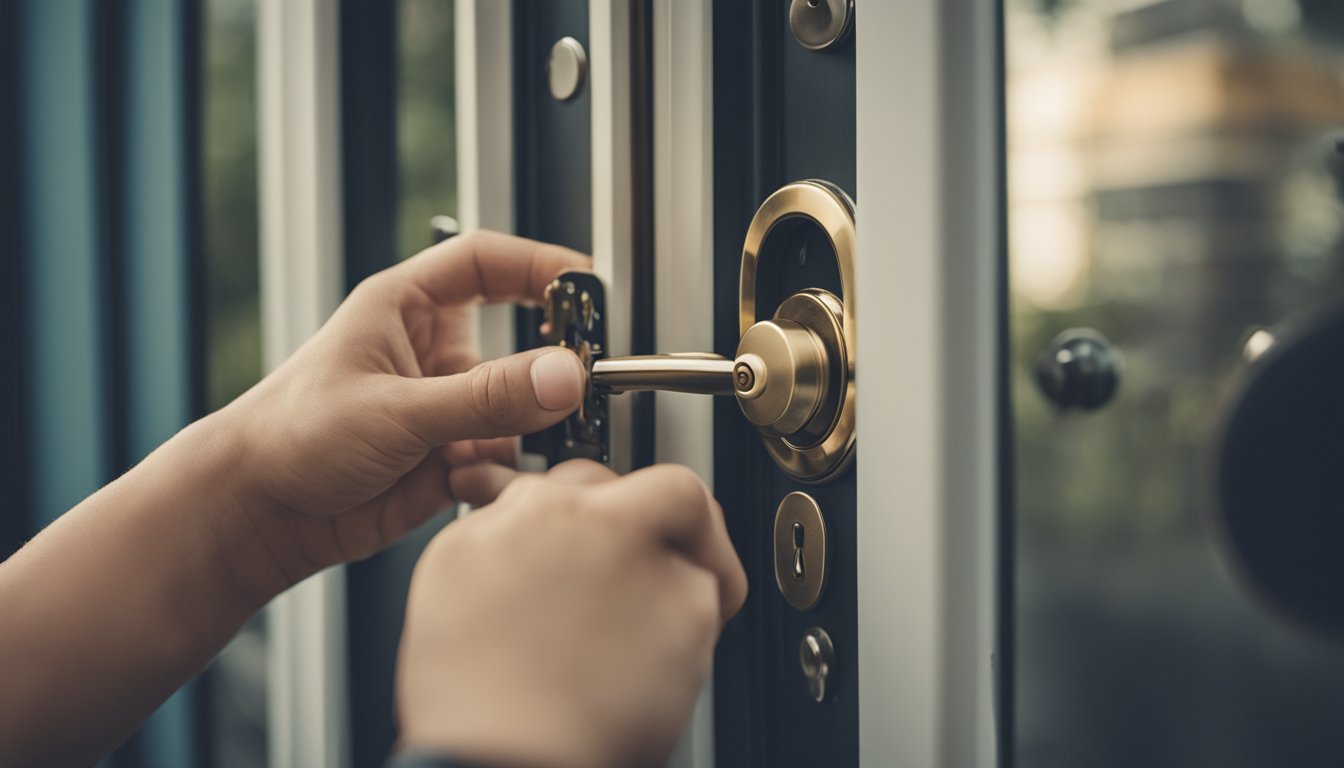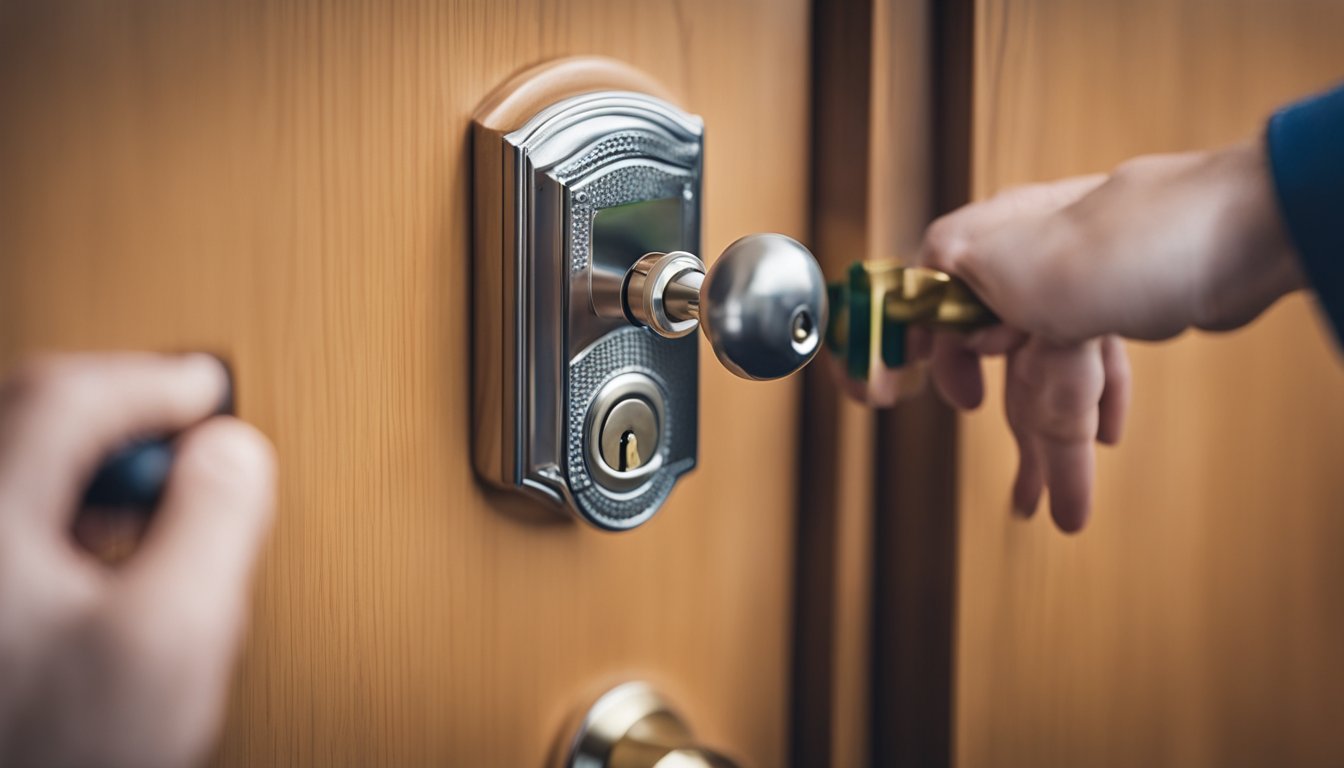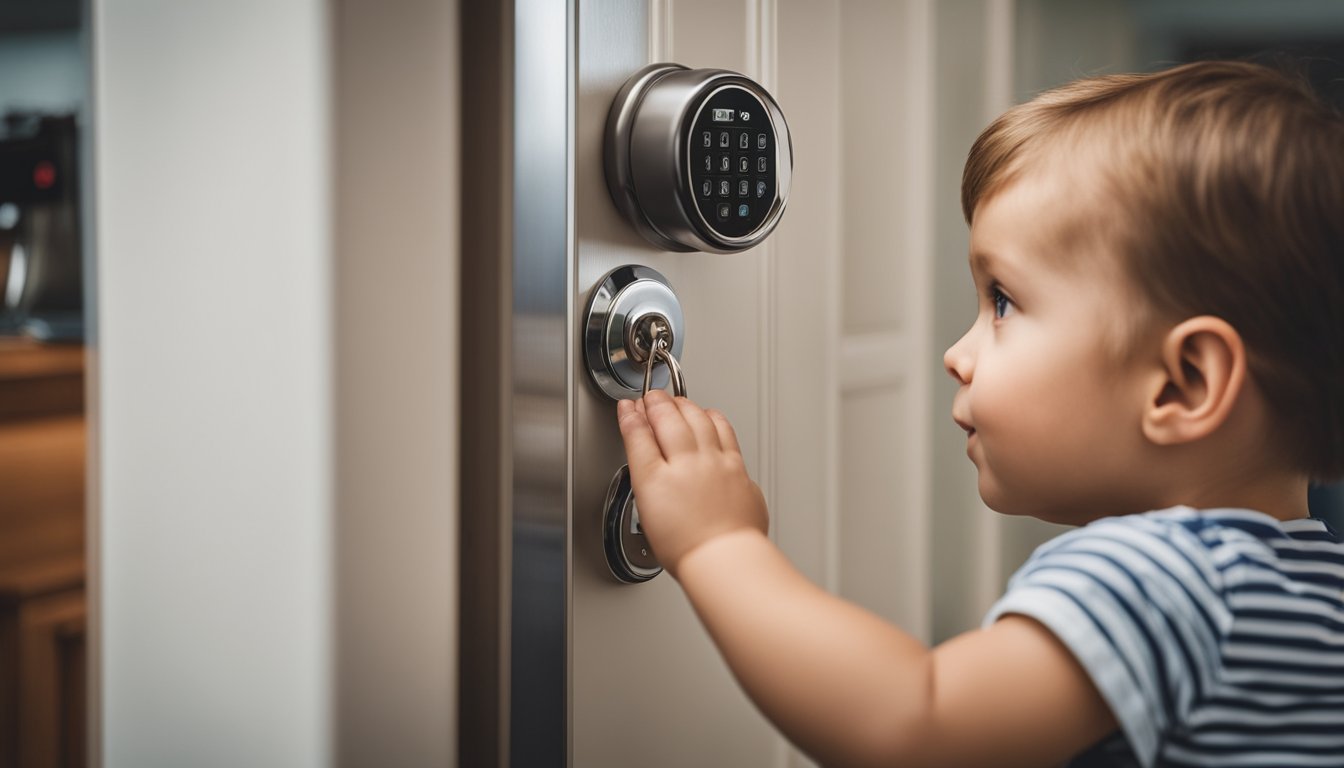Late updated: 04 Oct 2024 13:10
Written by: Elena Prescott
Simple Steps To Childproof Your Home Locks: A Guide for Safety-Conscious Parents
Our homes are where our children explore with curiosity and adventure. As much as we cherish those moments, we must also ensure their safety through effective childproofing solutions. From securing potential bathroom hazards to setting up safety systems, implementing childproof locks is a straightforward yet vital step in making every room safety-friendly. Ensuring child safety with appropriate locks is a small effort that can prevent significant accidents.

When babyproofing our homes, locks should be a priority for areas such as cabinets, toilets, and exterior doors. These simple additions are quick to install and can prevent potentially dangerous incidents. Keeping our children safe gives us peace of mind as they begin to discover and experience their world.
In the coming sections, we will guide you through the simple steps to choose the best childproof locks and how these solutions fit seamlessly into home safety strategies. By the end, you'll be equipped with practical tips to create a secure environment for your little ones.
Key Takeaways
- Childproof locks are essential for safety.
- Allocate locks to high-risk areas like cabinets.
- Easy installation enhances home safety.
Securing Potential Hazards
Creating a secure environment involves identifying common household hazards and taking steps to mitigate risks. It's essential to implement safety measures in high-risk areas like the kitchen, bathroom, living room, and bedroom to prevent accidents effectively.
Mitigating Risks in the Kitchen and Bathroom
The kitchen and bathroom are full of potential hazards. A major concern is hot water burns. Anti-scald devices are effective for regulating water temperature, protecting our children from accidental burns. Storing toxic substances such as cleaning products and medicines in secured cabinets is equally important.
Consider installing magnetic locks or cabinet latches to keep these items out of reach. Knob covers for the stove can prevent children from accidentally turning on burners. In the bathroom, storing sharp objects like razors and scissors safely and using babyproofing products will help reduce risks.
Living Room and Bedroom Safety Measures
Our living room and bedroom also present unique challenges. Furniture anchors are critical for securing large items like bookcases and televisions, preventing them from tipping over. Ensuring electrical cords are managed properly reduces tripping hazards and possible strangulation risks.
Window guards or cordless window coverings help in preventing window-related accidents. It's crucial to cover all electrical outlets with outlet covers to stop curious fingers. The use of corner guards on sharp furniture edges can prevent accidental injuries. Proper toy storage helps maintain a safer environment.
Preventing Access to Dangerous Items
Preventing access to dangerous items like medications, matches, and cleaning supplies is vital. Cabinet locks and drawer locks keep these items out of reach of children. We should also store hazardous materials safely and away from accessible areas.
Utilising safety latches enhances security by preventing children from accessing potentially harmful items. Keeping door knob covers on doors that lead to unsafe areas is a wise preventive measure. Preparing our homes with these safety devices reduces the risk of accidents involving dangerous items.
Implementing Safety Systems

Safety systems in our homes help to prevent accidents by forming a protective layer against possible hazards. Incorporating barriers, as well as emergency preparedness plans, ensures a safer environment for both children and adults.
Safety Barriers and Gates
Safety barriers and gates are an essential component in childproofing a home. Baby gates help to restrict access to potentially dangerous areas like staircases. They ought to be sturdy and securely installed to prevent young children from bypassing them. Characteristics to look for include pressure-mounted options for temporary use or hardware-mounted gates that provide a more permanent solution.
Safety gates can be particularly effective near the kitchen, bathrooms, or at the doorway to the basement. We should also consider using safety netting around balconies and railing gaps to prevent falls. Securing furniture with furniture anchors, such as bookshelves and televisions, can prevent them from tipping over onto children.
Cordless window blinds reduce risks associated with dangling cords. We must make sure that window locks are installed to prevent children from opening them wide enough to pose a danger. Corner and edge bumpers on furniture such as coffee tables help soften sharp edges, reducing injury risks.
Emergency Preparedness
Being prepared for emergencies can make a significant difference in outcomes. Smoke alarms are vital for alerting us to fire incidents; ensuring they are functioning and regularly tested is crucial.
First aid kits should be easily accessible, containing essentials like bandages, antiseptic wipes, and other emergency supplies. Establishing and practising a fire escape plan with clear exit routes equips us with a strategy in case of emergencies.
Water heaters should have anti-scald devices to prevent accidental burns from hot surfaces. Installing and maintaining important devices, like carbon monoxide detectors, ensures we are protected from invisible dangers. Emergency readiness is key, reducing response times and potentially saving lives.
Frequently Asked Questions

To effectively childproof a home, it's important to consider specific safety measures and devices. Addressing common questions can help clarify the essential steps needed to create a secure environment for children.
How can I ensure the safety of my child within the home?
Ensuring a safe home environment involves installing secure locks on cabinets and drawers. This prevents children from accessing hazardous substances. Additionally, safeguarding staircases with baby gates and covering electrical outlets can significantly reduce risks.
What measures should be taken to baby-proof a house for a toddler?
Toddlers are naturally curious, so securing sharp corners with protective bumpers is key. Placing non-slip mats in high-traffic areas, like bathrooms, also helps prevent accidents. Anchoring heavy furniture to walls reduces the risk of tipping.
Which child safety devices are essential for home use?
Essential safety devices include cabinet locks, outlet covers, and door knob covers. Safety gates are crucial for staircases and dangerous areas. Always choose devices that are simple for adults to use, but difficult for children to bypass.
What is the best way to secure doors to prevent children from opening them?
To prevent children from opening doors, installing door knob covers or latches can be effective. These devices should be easy for adults to operate but challenging for children. For sliding doors, consider using locks or safety bars.
How can parents safeguard their home when their baby starts crawling?
When babies start crawling, it's important to keep small objects out of reach. Defensive measures include sealing low-level cabinets containing cleaning products and medicines. Cover sharp furniture edges, and ensure the floor is clear of hazards.
What types of baby proofing products are recommended for a secure home?
Recommended products for a secure home include adjustable baby gates, magnetic cabinet locks, and corner protectors. Look for products that meet safety standards and can withstand the curiosity and strength of young children.
